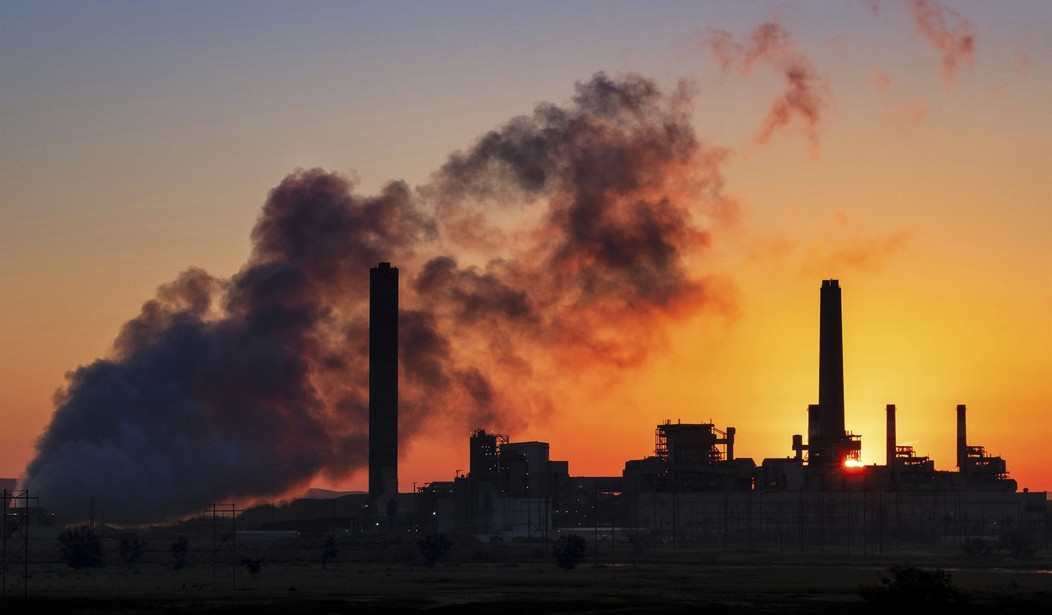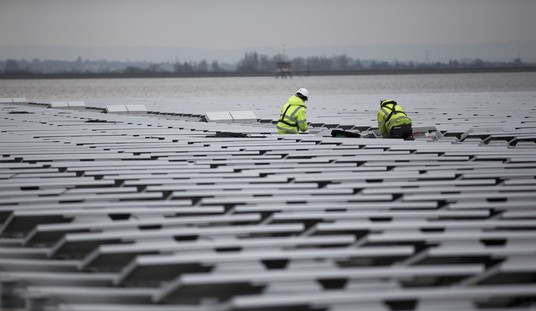To note that our modern society is energy-hungry is not only a massive understatement but an exercise in belaboring the obvious. Everything about our modern technological lifestyle requires energy and plenty of it, and cheap, reliable energy is one of the best (along with free markets) guarantors of a prosperous society. While "green energy" advocates still shout for the need for wind and solar power, the most reliable, efficient, and yes, cheapest energy in the United States is generated by fossil fuels - coal and natural gas - and by nuclear power.
In the last few decades, though, coal plants have been being shut down, and no new ones built. But given advancements in coal-burning technology, and also given that the United States is sitting on mountains of coal, there are good arguments for the continued use of coal. Dr. Wallace Mannheimer is a life fellow of the American Physical Society, the Institute of Electrical and Electronic Engineers, and is a member of the CO2 Coalition, and he has some interesting information on the use of coal as a part of our overall energy picture.
To start with, new technology is making coal-fired power plants cleaner than ever before:
Who can develop reliable, cheap, clean power? In the parlance of baseball, the U.S. led early with a leadoff home run. It invented, developed and perfected the first ultra-super critical (USC) coal-powered plant.
Coming online in 2012, the 600-megawatt (MW) John W. Turk Jr. Coal Plant in Arkansas employed new technology, most notably, an advance in metallurgy that allowed pipes and boilers to operate for extended periods at extremely elevated temperature and pressure.
This higher temperature allows efficiency of 40%, instead of the more usual 33%. Also, Turk had the best pollution controls, its emissions being mostly carbon dioxide and water vapor. Power Magazine was so impressed that it gave the plant its highest honor in 2013.
Those kinds of accolades do not obtain for even the most efficient coal-fired plants today, of course; the climate-change agenda has seen to that. Coal-burning technology has come a long, long way in the last few decades, but the climate scolds would have us think that the outputs of these plants are reminiscent of Victorian London, where coal soot and cinders filled the air. But the climate scolds want "green" energy, without much consideration as to what the inputs and outputs, not to mention the land requirements, are for those energy sources. But Dr. Mannheimer has done the homework:
...solar and wind technologies, contrary to popular belief, are not clean; not where their materials are mined, nor where they are used, nor at the end of life.
First, the mining: These technologies use many exotic and rare earth materials like praseodymium, terbium, cadmium, indium and dysprosium. Such materials are available mostly in Western China and Africa, under who-knows-what environmental and working conditions.
Secondly, where they are used, solar and wind take up tremendous amounts of land – many times the acreage of a coal plant. The average solar power reaching Earth is about 200 MW per square kilometer. Hence, with a perfectly efficient conversion to electricity, a 1,000 MW solar farm would require 5 square kilometers. But maximum solar efficiency is only 20%, boosting the land requirement to 25 square kilometers, space that could not be used for anything else. Even the maximum theoretical efficiency is only 30%.
The numbers for wind are worse: A 1,000 MW wind farm would require a whopping 500 square kilometers – equal to about 27,000 big league baseball fields. This land could be used for crops and grazing animals, but not much else.
As for the end-of-life of these facilities, a lot of the materials are hazardous, and some, like windmill blades, cannot be easily recycled, so end up being "stored," as in, placed in some open area in huge piles of carbon-fiber eyesore.
Coal is, when placed against these other methods, clearly a better option, at least given current technology. China, in fact, has pulled ahead of us in clean coal power - and is bringing new coal plants online in record numbers:
Having improved on USC technology, Chinese plant efficiency is around 44%. The new 1,350 MW Pingshan Phase II plant achieves 49% efficiency! The best Chinese coal plant is now cleaner and 22 % more efficient than its American counterpart.
Since 2010, India has constructed more than 90 super critical and ultra-super critical coal plants.
See Related: New Microsoft AI Center Meets Clean Energy Needs - With Nuclear Power
Harris Worries Oil and Gas Industry Leaders: America Can't Afford Her Agenda
America still has vast coal resources. Present estimates are up to 10.3 trillion short tons of coal, of which about 470 billion tons are recoverable with current technology. But coal is not politically correct, it is not acceptable to the climate scolds no matter how efficient, and how clean the state-of-the-art coal plants are. China is showing us up in coal generation technology, but there's no reason this should be the case. Policies that push for solar and wind power are not helping America move ahead into a technological future. These policies, with the heavy hand of government holding down efficient, cheap energy development, are holding back American progress.
Coal can and still should be a part of the American energy-production picture. So should nuclear power. The various levels of government need to recognize this if we are to maintain the growth of our ever-more-high-tech lifestyle.














